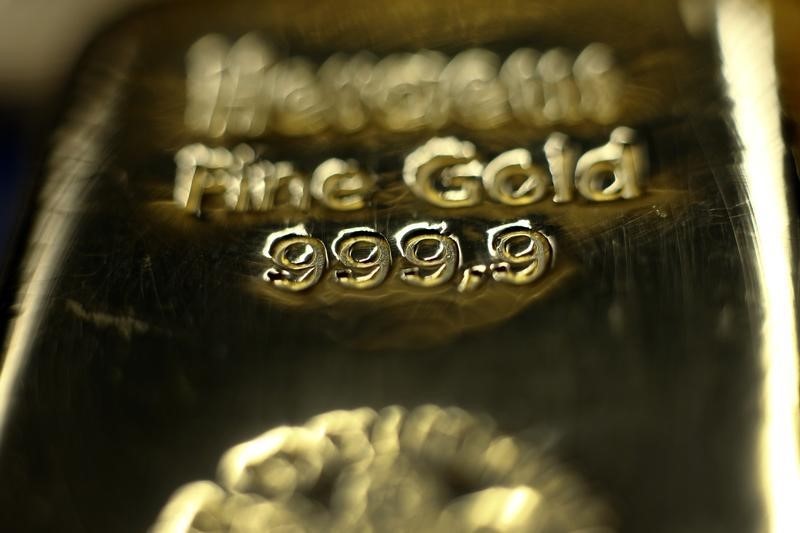Investing.com - Gold prices edged higher on Monday, but were off the best levels of the session as investors weighed the potential consequences of a series of terrorist attacks that took place in Paris on Friday night that left at least 132 people dead and more than 350 wounded.
The attacks led France to launch air strikes in Syria against the Islamic State (ISIS), which claimed responsibility for the attacks.
Gold for December delivery on the Comex division of the New York Mercantile Exchange ticked up $3.90, or 0.36%, to trade at $1,084.80 a troy ounce during U.S. morning hours. It earlier rose to $1,097.40, the highest since November 6.
Gold's gains were limited as market players prepared for a hike in interest rates by the Federal Reserve next month.
Prices of the precious metal have lost nearly 9% since mid-October as investors recalibrated their expectations of U.S. monetary policy in response to hawkish signals from the Fed.
Expectations of higher borrowing rates going forward is considered bearish for gold, as the precious metal struggles to compete with yield-bearing assets when rates are on the rise.
In the week ahead, investors will be turning their attention to Wednesday’s minutes of the Fed’s latest policy meeting for fresh indications on the prospects of a December rate hike.
Market players will also be looking ahead to U.S. data on inflation, building permits and manufacturing activity for further clues on the strength of the economy.
Elsewhere in metals trading, copper prices dropped to the lowest level since May 2009 on Monday, as appetite for riskier assets took a hit following the weekend attacks in Paris that left 132 dead.
Copper prices lost 6.8 cents, or 3.17%, last week, as the possibility of higher interest rates in the U.S. and slower global economic growth, particularly in China, weighed.
Prices of the red metal are down 25% since May as fears of a China-led global economic slowdown spooked traders and rattled sentiment.
The Asian nation is the world’s largest copper consumer, accounting for almost 40% of world consumption.
